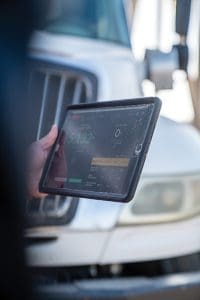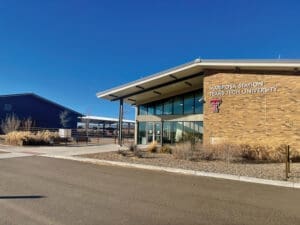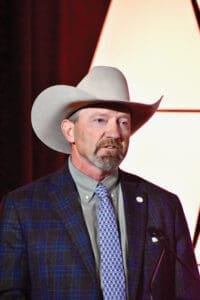By Gilda V. Bryant, Contributing Editor

An innovative app developed by Argentina beef producer Ignacio Albornoz is now used by ranchers in 15 states, Canada and four countries in South America. Albornoz, CEO and creator of the Cattler app, and his team have developed this user-friendly mobile and desktop software platform that collects critical data about rations, health, animal movements, and profit or loss data, while the producer uses the app.
The first Cattler version focused on the feedlot. When cow-calf and stocker operators asked for features they could use, Albornoz and his experts beefed up the app for their operations.
Passionate about beef producers and cattle, Albornoz believes the Cattler app must be flexible by design, allowing him to improve features as needed. He considers customer insights and information key to improving the app. Albornoz launches new features based on user suggestions every 15 to 30 days.
“Many app developers don’t understand how farmers do things,” Albornoz explains. “Their apps are over engineered, often overwhelming the real-life user. We try to keep it simple so producers can use it daily. It’s a constant exercise of simplifying things, with fewer steps and clean visuals while the app keeps growing in functionalities, which is a difficult balance.”
Cattler works with visual or electronic (EID) ear tags. Subscribers can bundle the app’s different sections such as health, feeding or rations. The app tackles all feeding-related information such as prices paid for commodities, amounts delivered to the bunks or veterinary inventory. It also covers purchases, entries, origins, IDs, movements and deaths, all the way to the day every lot is sold on the livestock inventory side.
Because Cattler is cloud-based, ranchers can add data offline and the app will sync when the device recovers internet access. The app’s ability to read other companies’ devices, such as scales and EID readers, allows it to integrate all the information in one place. The most essential feature is continuous change.
“This app was conceived in its infrastructure to be flexible enough to allow changes or improvements as needed,” Albornoz explains. “We thrive on customer feedback because they have insights and information about what’s better for their operations.”
Fourth-generation rancher Chance McLean owns two feedyards near York, Neb. He subscribed to Cattler’s most extensive license, including billing capabilities used by custom feeders and all the cattle processing features. McLean enjoys the cloud-based Cattler app, easily accessing information with his iPhone or desktop computer.
“I can add info in minutes,” McLean shares. “The ‘Alert’ page shows daily movements of cattle, those treated for illness, and incoming and outgoing inventory. It lists the day’s activities so I understand what’s happening in the feedyard, even if I’m gone. This has been a great investment.”
The feedlot app manages the feedyard with information about each animal or pens of cattle. If a pen rider spots a sick animal, he identifies it by ear tag number in the database. He can see if it has had previous treatments, enter a request for medications and let other employees know he is moving the animal to the sick pen—all in seconds from his iPhone.
“We thrive on customer feedback because they have insights and information about what’s better for their operations.”
– Cattler CEO Ignacio Albornoz
Doug Eilert operates the Eilert Cattle Company near Wamego, in northeastern Kansas. For nine years, he was unable to find software to fit his needs until he discovered this innovative app.
“Before Cattler, I used a paper and pencil record-keeping system, which is inefficient,” Eilert reports. “Now I manage the rations, immediately sending changes to my feed truck drivers. I make bunk calls based on dry matter intake or feed supplies. I evaluate animal weight comparing it to what Cattler says it should be, allowing me to see if my rations are performing how I want them to.”
Eilert says this is the only program he has found that works for smaller operations of 500 to 4,000 animals. With his favorite Cattler feature, Yardsheet, Eilert can see data for different lots and penned cattle. Performance and dry matter intake appear in graph form, making information easier to understand.
Because the feeding industry has tight margins, a data-driven software program like Cattler helps Eilert identify areas for improvement. He enjoys superb customer service and the continuous software updates.
For more information, visit cattler.farm.






